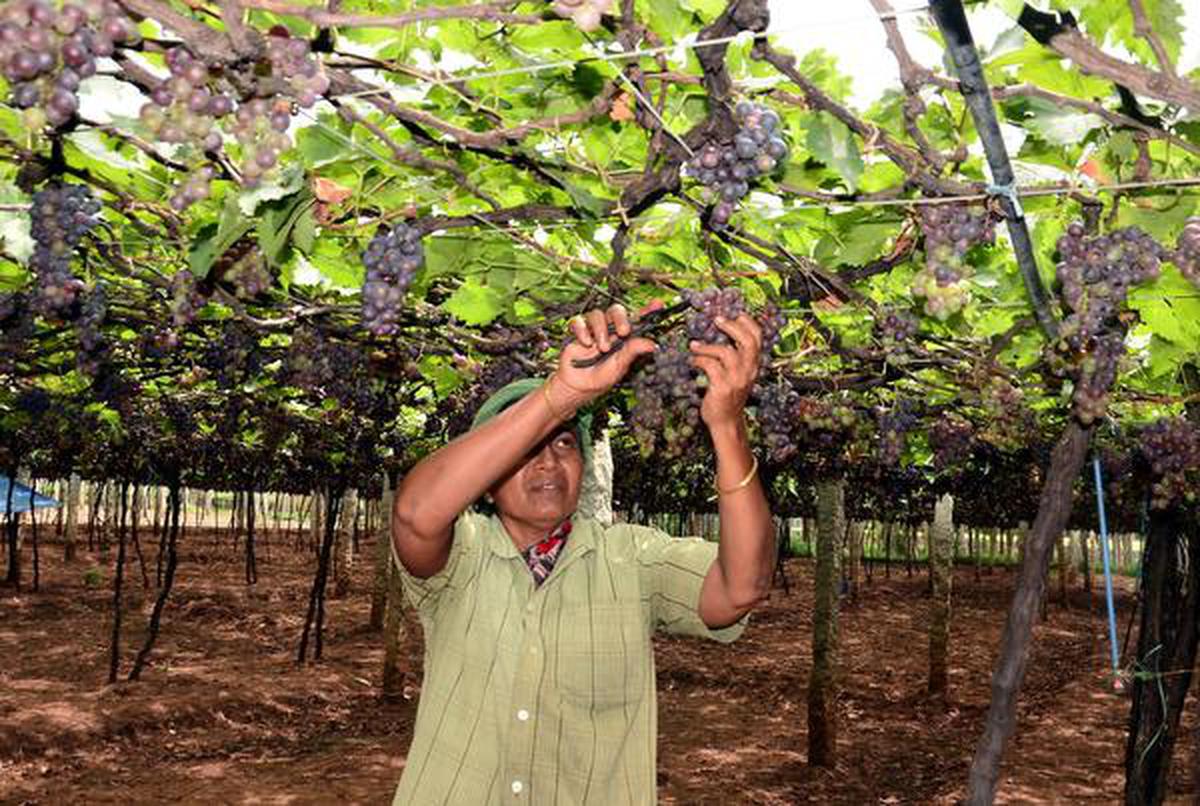Food & Climate
In the Indian city of Nashik, the country’s capital of grapes and winemaking, only wealthy farmers grow grapes for export. What’s the story behind that and what’s the relationship between climate and it?
Poor farmers in the Indian city are losing appetite to grow grapes for export, even though the prices sold to foreign markets are several times higher than the local market.
Farmers from Nashik now export premium table grapes to Europe and other western markets. They receive two to three times the price from exports compared to when they sell to domestic buyers.
In a good year, a ten-acre-grower can hope to make upwards of ₹25 lakh in profit, a minor fortune in rural India, according a report seen by “Food & Climate” platform.
But that’s not all. Farmers also say they spend sleepless nights when the weather turns adverse.
Untimely rains or hailstorms at the flowering stage or during the harvest season- which is becoming more frequent due to climate change- can damage grapes which are very sensitive. Even 2 mm of rain when the berries are ripe leads to a crack on the surface, rendering them useless for export markets.
This is a reason why only well-to-do farmers indulge in table grapes for export.
To grow grapes in Nashik
Adverse climate affects crop productivity in multiple ways.
In recent years, heavy and extreme rainfall days have increased during the monsoon season. In addition, extreme heat is taking its toll.
Every degree of increase in temperature can reduce wheat production by 4-5 million tons. Come to think of it, after a heatwave crippled the wheat crop in 2022, prices have remained elevated two years later. And for some varieties of pulses, production has fluctuated due to wayward rains.
It’s not just crops; dairy animals too are impacted by heat stress. Some studies suggest that milk output in India, the largest producer in the world, could see a 25% decline by the end of this century. That will affect millions of small dairy farmers who survive on the regular earnings from milk sales.

So, how can one protect farm output from climate risks? One solution is to invest in research to deliver climate-resilient varieties. However, farm research funding in India continues to be paltry, and most of it is spent on field crops like rice and wheat, which is why the enterprising grape farmers of Nashik did not wait for the government. They purchased exclusive rights to grow patented varieties from an international breeder by paying a hefty sum of ₹35 crore, according to “Mint”.
Hottest July
Rain was not the only reason that negatively affected grape cultivation in the world. In the US state of California, it was affected by the hottest July ever.
ABC30 meteorologist Christine Gregory, explains “The National Weather Service took an average of afternoon highs and the lows. You get what’s called the mean temperature for the month of July, and it was actually the hottest July on record”.
“We haven’t seen temperatures quite that hot in the past 20 or 30 years,” said Gregory.
The San Joaquin Valley grows most of the nation’s fresh-market table grapes.
That heatwave slowed the supply after sending shock waves through the growing community.
“All of a sudden, we looked, and we noticed sunburn on the grapes. Then, all of a sudden, the size was off a little bit. We applied more water, but it didn’t really seem to do much,” said grape grower George Matoian.
Matoian and his brother have been growing grapes in Fresno County near Easton for decades.
In addition to the sunburn, the prolonged triple-digit heat stunned the crop.
“This year, we’re having a problem with the color grapes because it’s just too hot. The vine just shut down and didn’t want to color, didn’t want to size the fruit and didn’t want to sugar the fruit too,” said Matoian.

For most of July, field workers needed to shorten their shifts to avoid heat-related illness.
Since most table grapes are also packed in the field, the heat cut packing short too.
Another risk to workers is that the heat contributes to ground-level ozone.
“It’s essentially a mix between sunlight and heat, and it sort of creates this chemical reaction between the pollutants in the air, car exhaust, wildfire smoke. All those things go hand in hand, and it creates this harmful chemical that goes into the air, the ozone,” said Gregory.
$1= 85.39 Indian Rupee.

